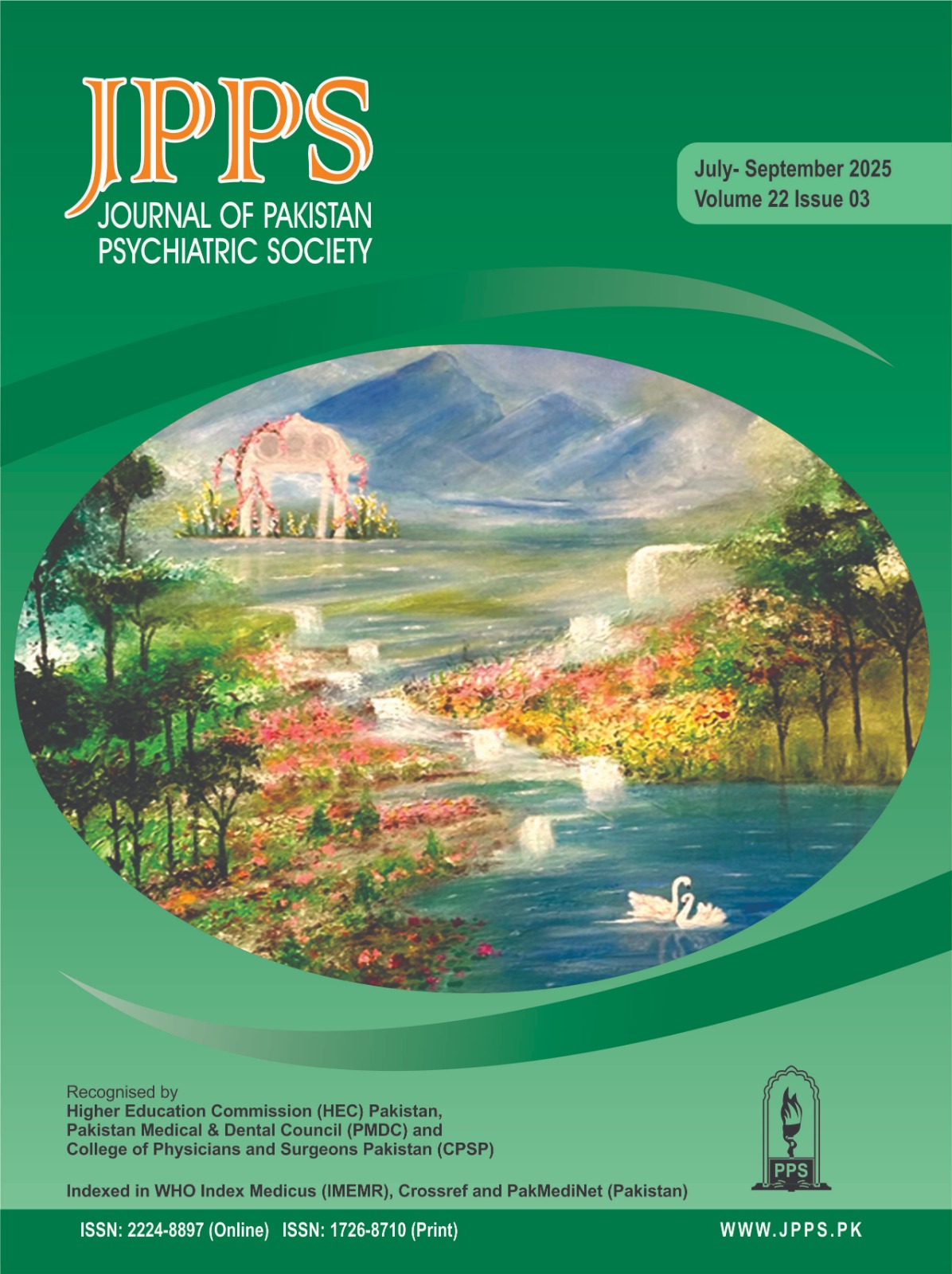MODERATING ROLE OF COPING STRATEGIES IN RELATIONSHIP BETWEEN HOUSEHOLD CHAOS AND SOCIAL ADAPTIVE FUNCTIONING OF ADOLESCENTS
Abstract
ABSTRACT
OBJECTIVE
To examine the interplay between the house hold chaos, social adaptive functioning and coping among adolescents.
STUDY DESIGN
Cross-sectional research design.
PLACE AND DURATION OF THE STUDY
The study was conducted at IIU during June 2020 to January 2021.
SUBJECTS AND METHODS
400 participants between age 10 to 19 years were selected through convenience sampling technique to participate in the study. Confusion, Hubbub and Order Scale (CHAOS), Child and Adolescents Social Adaptive Functioning Scale (CASAFS), and Brief Cope Scale (BCS) along with demographic sheet were used to collect data on the variables understudy.
RESULTS
Results revealed that as the household chaos increases the social adaptive functioning decreases (r=-.33**). The results of findings depict that problem-focused coping buffer the effect of household chaos on school performance (R2=.31, ∆R²=.30, p<.05) and on home duties /self-care (R2=.23, ∆R²=.22, p<.05). Results of emotion-focused coping revealed that EFC buffer the effect of household chaos on peer relationship (R2=.23, ∆R²=.22, p<.05) and on family relationship (R2=.33, ∆R²=.32, p<.05).
CONCLUSION
House hold chaos, social adaptive functioning and coping has an interdependent relationship among adolescents. Increased household chaos predicted decline in social adaptive functioning while coping played a moderating role between these two factors.
KEY WORDS
Household Chaos, Social Adaptive Functioning, Coping Strategies, Adolescents
Downloads
Copyright (c) 2025 Journal of Pakistan Psychiatric Society

This work is licensed under a Creative Commons Attribution-NonCommercial 4.0 International License.
Copyright © JPPS. Published by Pakistan Psychiatric Society
Licensing: This work is licensed under Creative Commons Attribution-NonCommercial 4.0 International License
Readers may “Share-copy and redistribute the material in any medium or format” and “Adapt-remix, transform, and build upon the material”. The readers must give appropriate credit to the source of the material and indicate if changes were made to the material. Readers may not use the material for commercial purposes. The readers may not apply legal terms or technological measures that legally restrict others from doing anything the license permits.






.png)









